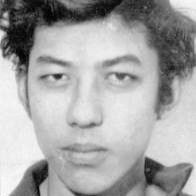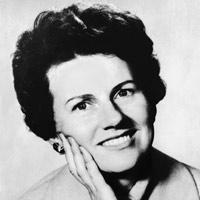
b: 1948
Nizamodeen Hosein
Summary
Name:
Nizamodeen HoseinNickname:
The Kidnapper of Rook's FarmYears Active:
1969 - 1970Birth:
July 01, 1948Status:
ReleasedClass:
MurdererVictims:
1Method:
UnknownNationality:
Trinidad and Tobago
b: 1948
Nizamodeen Hosein
Summary: Murderer
Name:
Nizamodeen HoseinNickname:
The Kidnapper of Rook's FarmStatus:
ReleasedVictims:
1Method:
UnknownNationality:
Trinidad and TobagoBirth:
July 01, 1948Years Active:
1969 - 1970Date Convicted:
October 6, 1970bio
Nizamodeen Hosein was born in Trinidad and Tobago around 1936 and later migrated to the UK. He lived and worked at Rooks Farm in Hertfordshire alongside his older brother Arthur. Before the crime, Nizamodeen held down manual work, helping out on the property. Not much is publicly known about his early life or personal relationships before the kidnapping. However, court documents and media accounts paint him as the quieter sibling compared to Arthur—though still complicit in their shared crimes.
After decades of imprisonment, Nizamodeen was released in 1989–1990 and deported to Trinidad and Tobago. For years he remained silent. It wasn’t until around 2021, when approached by a documentary team and the McKay family, that he offered a confession and map revealing where he claimed Muriel McKay's body was buried.
murder story
On 29 December 1969, Nizamodeen and his brother Arthur broke into Muriel McKay’s Wimbledon home, mistaking her for Rupert Murdoch’s wife. Over the next week, Muriel was held at their Rooks Farm property as the brothers demanded a £1 million ransom.

During captivity, Muriel supposedly collapsed—experiencing a heart attack triggered by sedatives the brothers had administered. According to Nizamodeen’s later confession, this occurred around New Year's Eve, roughly two days after the kidnapping.
Police traced the crime, locating the distinctive ransom calls tied to the farm. On 7 February 1970, officers arrested both brothers. Evidence included witness descriptions, fingerprints, and voice matching on ransom recordings. In court, they were convicted at the Old Bailey on 6 October 1970 despite the absence of a body—marking one of Britain’s first murder convictions without a corpse.
Nizamodeen received a life sentence with a minimum of 15 years. He served about 20 years, being released in 1989–1990 before deportation to Trinidad and Tobago.
In January 2024, Muriel McKay's son and grandson flew to the Caribbean to meet him. Nizamodeen provided a map and details, claiming her remains lie under a former dung heap near the farm’s barn thetimes.co.uk+5theguardian.com+5thetimes.co.uk+5. His promise to return to Britain to guide police was reported in August 2024 . Subsequent police digs in July 2024 and 2022 failed to uncover any remains. The case reopened once more in June 2025 with the McKay family even issuing a £1 million reward for credible information.